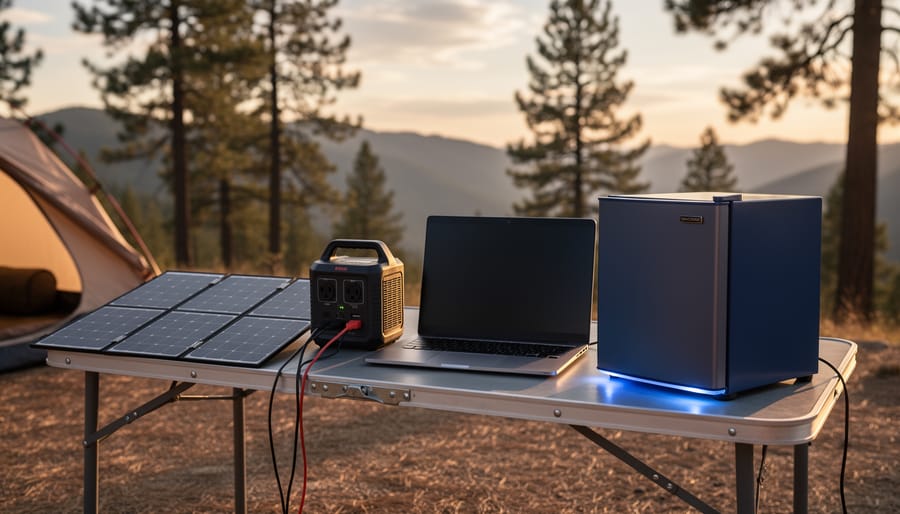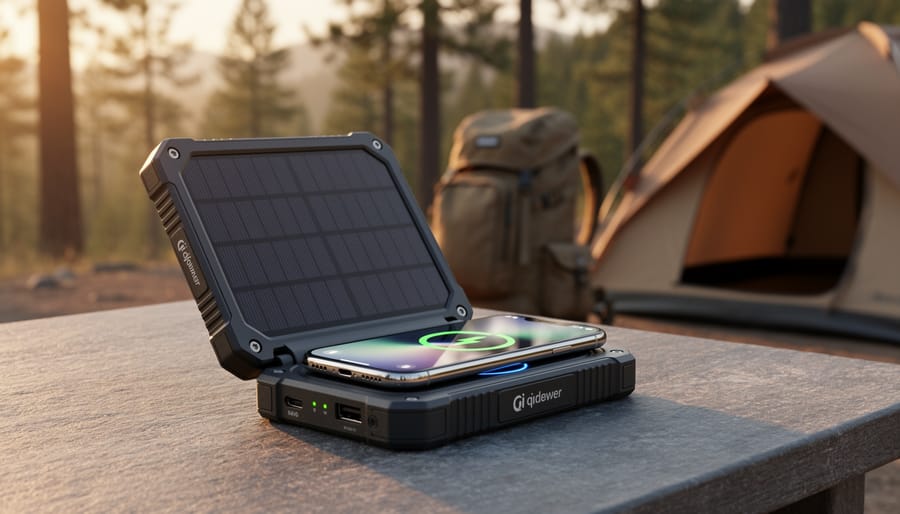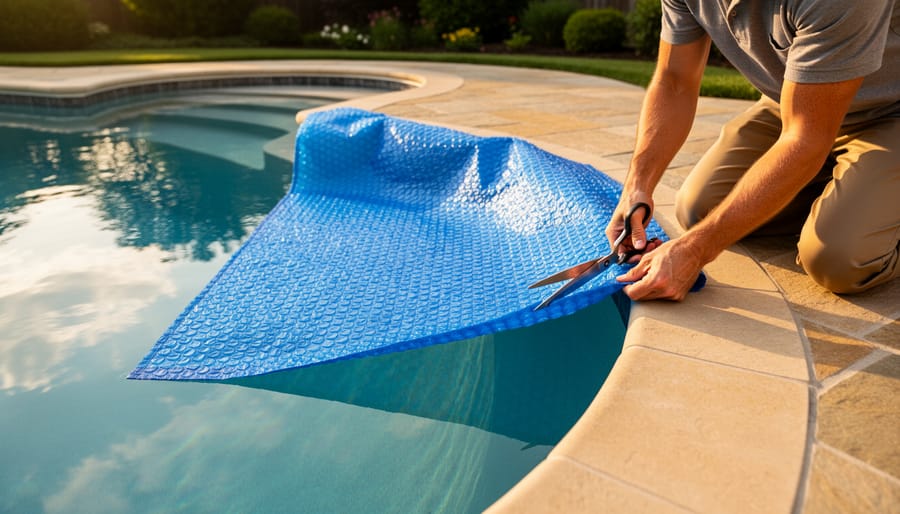How to Clean Solar Lights – Why, When and How
Updated:

Solar lights and their moderately dirty panels are best cleaned with a mild detergent and a soft, damp cloth. Light lenses that have become cloudy can be coated with clear lacquer, buffed with a mild abrasive, or polished. The same applies to solar panels with a build-up of salt or rain-born mineral deposits on their surfaces. Listed below are the tips on how to clean the solar lights of each characteristic.
For most routine cleaning, a soft cloth dampened with water will get solar lights looking good again. A small paintbrush is also a great tool for getting dust out of all the tight spaces on the fittings. If the lights are foul, a mild detergent or a window cleaner will normally remove stubborn grime.
Solar light lenses can also become cloudy over time which not only looks bad and transmits less light. Buffing with a very fine abrasive like car detailing polish will fix the problem in all but the worst cases. Toothpaste also works wonders for buffing up a moderately cloudy acrylic lens. Once the lenses are clear again, they can be coated with UV-resistant clear lacquer to keep them clean for longer. You could even use clear nail polish to coat them.
Using acetone is also a great way to clean solar lights. You should test the acetone on a small, inconspicuous part of the fitting first, as it can degrade some plastics.
Rain or airborne contaminants such as salt, lime, or calcium can cause serious build-ups on a lights’ solar panels. The same mild abrasives like auto or metal polish are the best way to clean solar lights with these deposits. Acetone also works well, but as mentioned earlier, proceed with caution. Again, a coat of clear lacquer offers long-term protection for the panels to clean the solar lights.
Cleaning Solar Lights: The Why
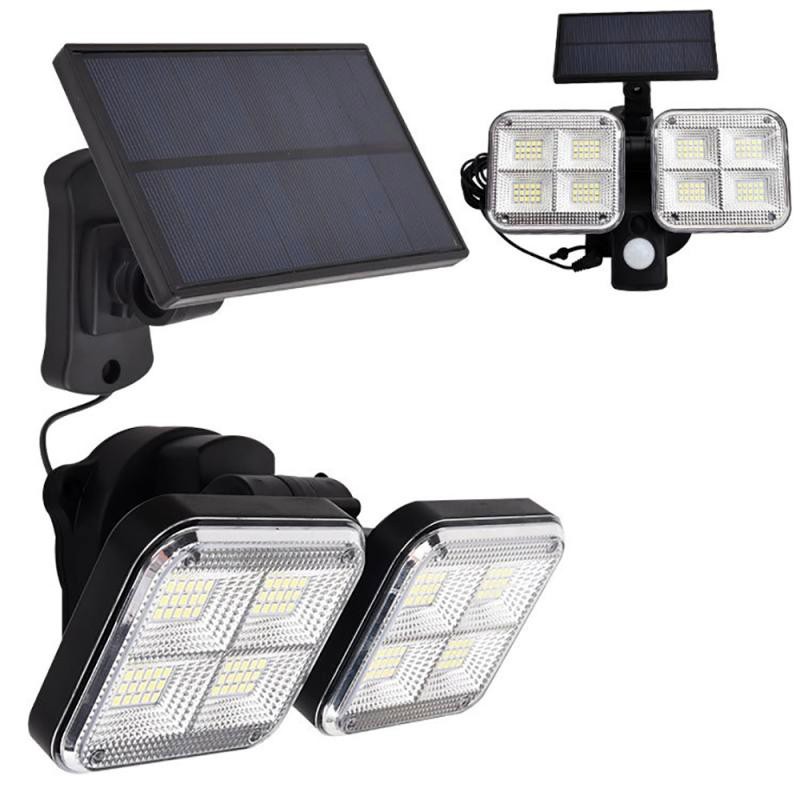 Apart from dirty, grimy light fittings that look bad, they don’t work as well. Filthy or cloudy lenses don’t transfer as much light, and dirty solar panels lose charging efficiency. Anything up to 30 percent efficiency, as a matter of fact. Considering that many solar lights only have small batteries and panels, it can be a recipe for disaster.
Apart from dirty, grimy light fittings that look bad, they don’t work as well. Filthy or cloudy lenses don’t transfer as much light, and dirty solar panels lose charging efficiency. Anything up to 30 percent efficiency, as a matter of fact. Considering that many solar lights only have small batteries and panels, it can be a recipe for disaster.
Cleaning Solar Lights: The When
Routine cleaning is a great way of preventing heavy soiling buildups on outdoor solar lights. It may be tedious but will ensure your interior and landscape solar lighting stays in tip-top shape.
Bi-weekly or Monthly Cleaning
Wiping each fitting down with a damp cloth is quick and keeps the lights looking good and working well. In many cases, you won’t even have to move the lights to do this.
If your schedule allows, this can be done bi-weekly or at least once a month. If you live where there’s much smog or airborne salt, you may have to up the frequency. Don’t forget to clean the solar panels while you’re busy.
Seasonal Solar Light Cleaning
Seasonal weather events like snow and rain tend to dirty up solar lights quickly. The same applies to areas that experience summer bush fires when ash and soot settle on just about everything. End-of-season deep cleaning of your solar light fittings will help to maintain clean solar panels and lights year-round.
This will certainly take a little more effort and require the use of a mild detergent or solar panel cleaner. The same process as monthly cleaning will apply with the addition of a little more elbow grease!
Yearly Solar Light Maintenance
It’s good practice to strip and thoroughly maintain solar lights once a year. During these sessions, the inside and outside of the lights should be cleaned, along with routine battery checks or replacements.
If you have stuck to a monthly and seasonal cleaning regimen, cleaning the lights will be quick and simple.
Supplemental
As a supplemental subject, yearly battery maintenance or replacement is something that deserves mention here. And as it’s good practice to strip your lights once a year, it makes good sense to do it then.
Most folks wait until the lights either don’t last the night or get dim before changing batteries. That’s OK, but it’s a good practice to routinely replace all your batteries at least once every two years. With the average 24 pack of 1,000 mAh NiMh batteries costing around $20.00, it’s a sound idea to do this.
You’ll maintain not only high light outputs but also reduce the possibility of sudden failure and battery leakage. Modern rechargeable batteries are really reliable, but they do have limitations.
On the subject of leakage, if you do experience this (and it seldom happens anymore with newer batteries), here’s a tip. To remove corrosion buildup on battery terminals, dissolve a tablespoon of baking soda in a cup of lukewarm water. Then use a soft bristle brush to gently “paint” some solutions onto the affected terminals.
The alkali baking soda will immediately cook the acid buildup off the terminals, leaving them good as new. Wipe the crud out of the battery housing with a paper towel, and you’re good to go. Any pitting on the terminals can be removed with fine-grit sandpaper or rubbing compound.
NOTE: Although the baking soda will have largely neutralized the acid, wear gloves when doing this. Also, use paper towels and not a cloth, unless, of course, you’re happy to sacrifice it.
Cleaning Solar Lights: The How
Normally, wiping the fitting exterior down with a dampened cloth is all it takes for most of the cleaning schedule. However, regular window cleaner works wonders in environments where atmospheric pollution is bad. A soft brush is also great for removing loose debris.
And the damp cloth is important. Never spray water or solvents directly onto solar lights. They may be rated weatherproof, but there’s a limit to how effective that is. If the enclosure does get wet inside, it can burn the circuit boards out or cause battery corrosion.
If you get water inside the enclosure, remove the light cover and dry the excess water with a cloth or a damp paper towel. Then leave the light open in a sunny location (if it can be moved) to dry out completely.
Cloudy Solar Light Lenses
Prolonged exposure to UV light and contaminants can leave clear acrylic lenses cloudy or opaque. In most cases, cleaning the crud build up off with a detergent then polishing the lenses solves the problem. Any auto or metal polish or headlight restorer works a charm for this, as does toothpaste, believe it or not.

To get it done, clean the light thoroughly and let it dry completely. Apply polish to the lens or light cover and rub it in for a minute or so in a circular motion. Now, let it dry to a haze. When it is dry, take a clean, dry cloth and buff all the polish off.
This will be sure to improve the lens clarity. However, it may be necessary for additional passes to get it good as new. A Q tip or old toothbrush is handy for getting polish out of the nooks and crannies.
In particularly stubborn cases, a buffing ball or pad in a battery drill can remove really bad clouding and discoloration.
Heavily Soiled Solar Panels
Some solar lights that have solar panels mounted flat on the light cover are prone to heavy soiling. Water tends to pool on the solar panel’s surface, and they take longer to dry. Remember, clean solar panels equate to efficient lighting and the longest burn times.
These include dock lights, lantern and bollard path lights, some balustrade mounted step lights, and deck and disc lights.
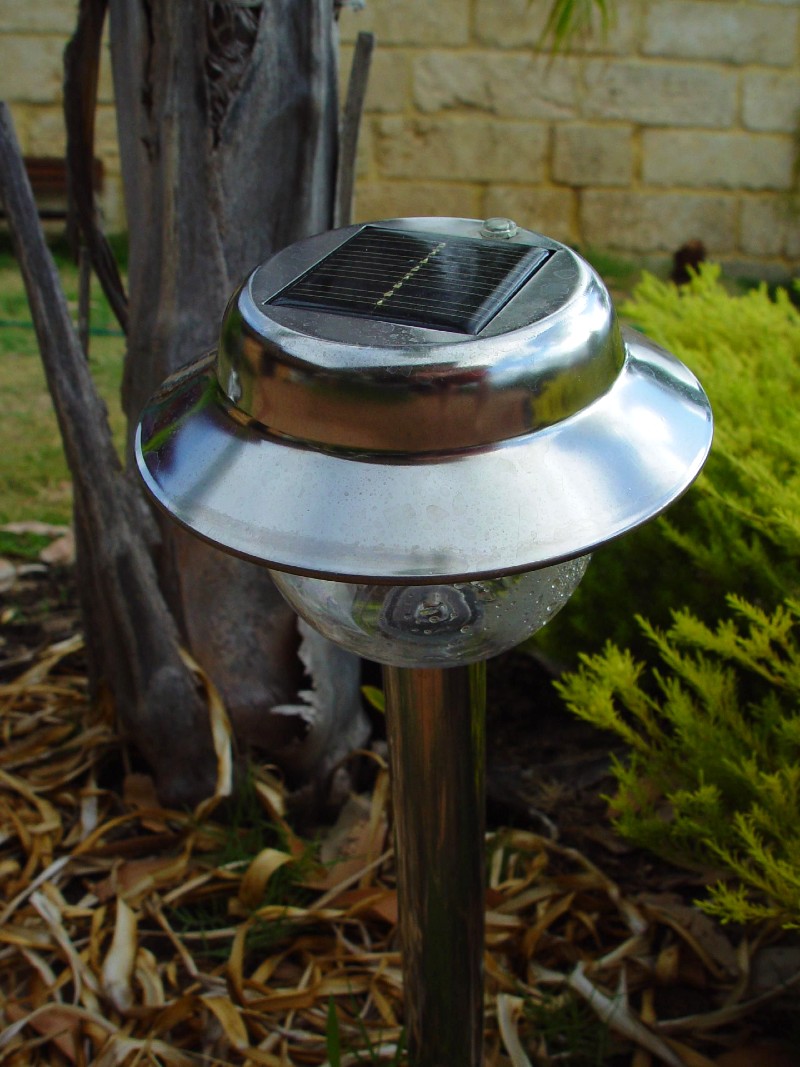
The same basic cleaning process we outlined above for cloudy lenses works well for solar panels on up-lights. Acetone is a great tool to clean solar panels. Just be careful though, acetone can really ruin some plastics. First, test the solvent on a hidden part of the light before splashing out.
Most solar panel covers are pretty tough, and they generally stand up well to buffing. Keep at the polishing process until you can clearly see the solar cells then you’re good to go.
Lights at Height and the Stand-alone Solar Panel
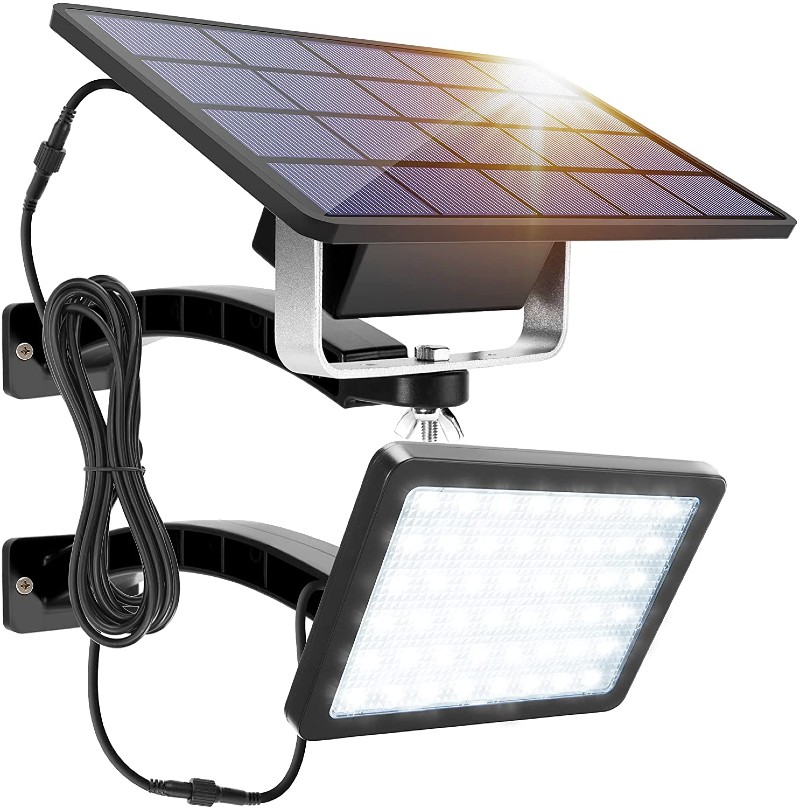
Solar lights mounted on buildings or solar lamp posts can be challenging to clean. These include gutter lights, spotlights, and motion sensor security lights. In most cases, you’ll have to press your ladder into service, and then ladder safety comes into play.
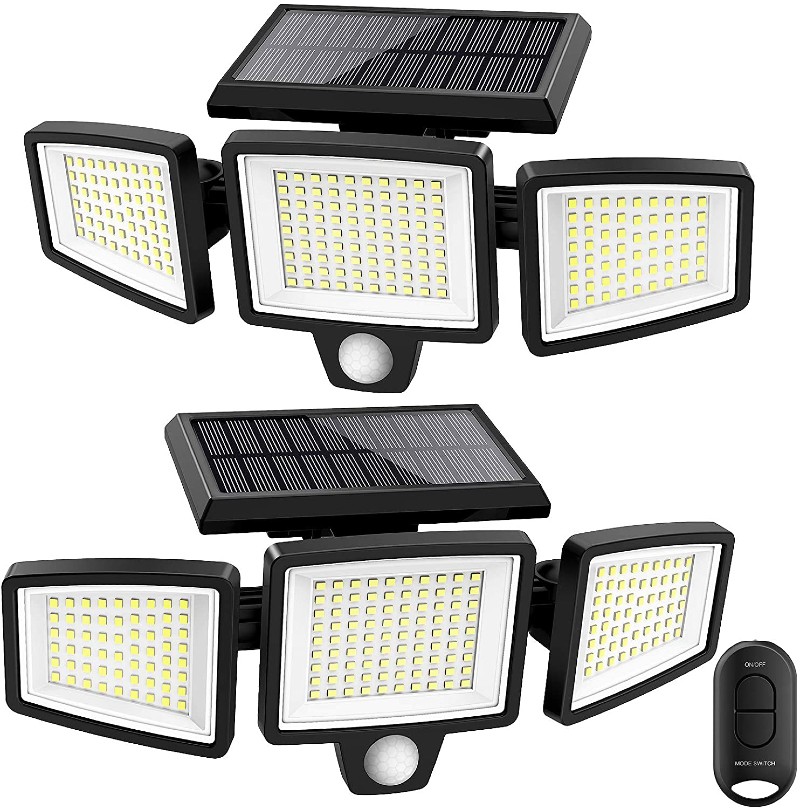
Many solar floodlights, lamp posts, flagpole lights, and shed lights have separate solar panels. Most of those are tilted to harvest the maximum light. Solar panels that are tilted are less prone to gathering dust and dirt, making cleaning easier. So, cleaning these solar lights and their solar panels is pretty routine outside of falling off your ladder.
High Voltage Solar Lights
Not all folks choose to convert existing landscape lighting to low-voltage solar lighting fittings. In these cases, the lights will typically be powered by high voltage AC power from the solar inverter.
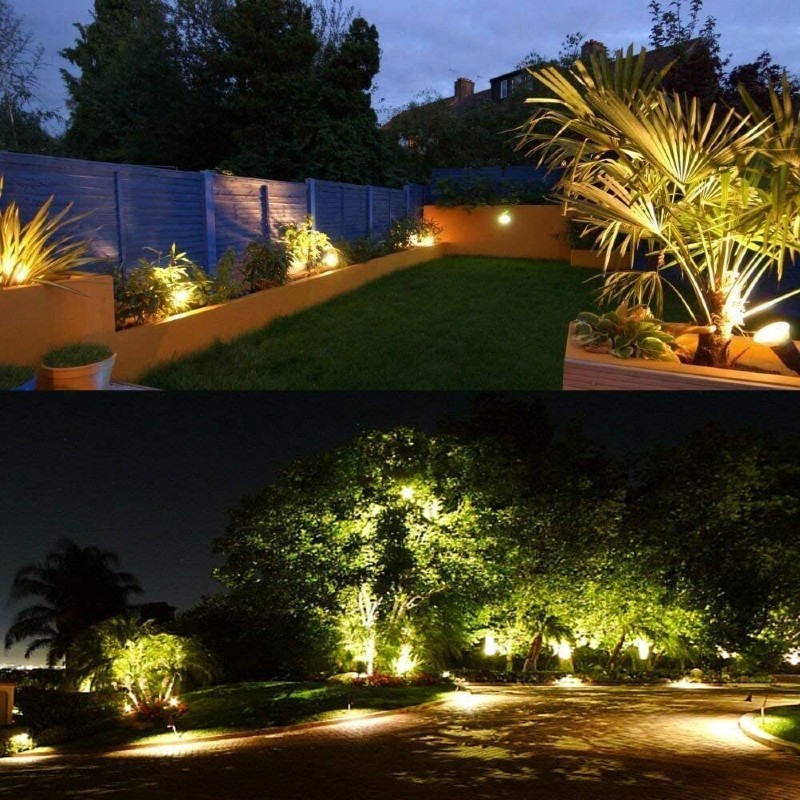
This is a whole new ball game, and extra care should be taken as water and high-voltage AC doesn’t mix. Always isolate high voltage lighting at the distribution point before cleaning. Preferably at the solar panel or combiner box.
Outside of that critical safety precaution, it’s business as usual. Just ensure you prevent water penetration with extra vigor. Having even a damp fitting when the garden lights power switches on can cause serious problems.
String, Christmas, and Fairy Lights
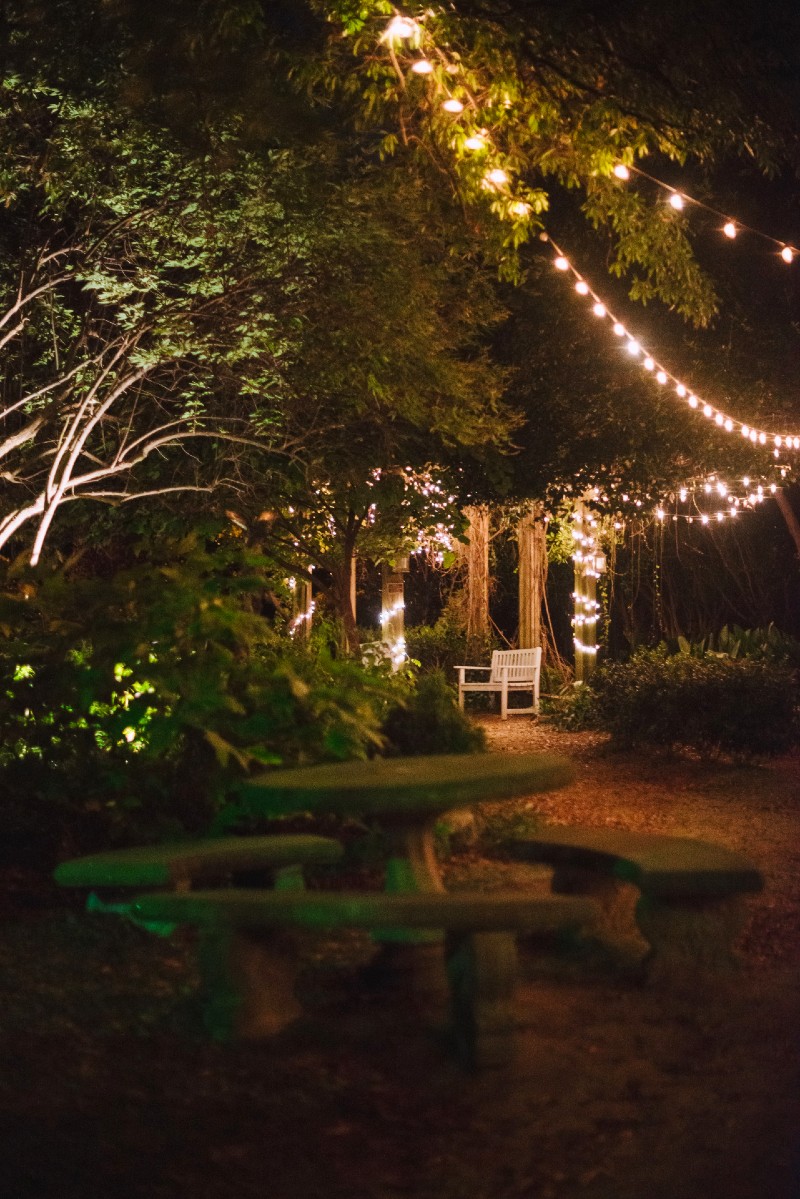
These light fixture types are a real pain to clean. Essentially, each one of the individual fittings has to be wiped down. This requires a comfy seat, a dampened cloth, a lot of patience, and strong coffee!
Seriously, you have to run through all the string, fairy, or Christmas lights, cleaning each fitting as you go. There’s simply no way around that. Ensure that the lights have had enough time to dry before you fire them up.
Common Contaminants and Special Considerations
When it comes to cleaning solar lights, not all the baddies play the same game. Here’s a list of the common causes of solar light and solar panel soiling and how best to clean them.
- Dust. A simple wipe down with a dampened cloth is usually enough. The problem is dust, when combined with other contaminants, can be bullet-proof.
- Salt deposits. Dish soap, water, and, in severe cases, acetone is the answer.
- Soot and ash. A dampened cloth or paper towel will do the job.
- Pollen. Pollen can be challenging, but window cleaner or acetone removes even the most stubborn pollen contamination.
- Atmospheric pollutants. These contaminants can be tough to remove, especially if you leave cleaning them too long. Again solar panel cleaners, dish soap, or acetone are the answer.
- Rain-born minerals. If left to accumulate, lime and calcium are really hard to remove. In some cases, stubborn buildups can relegate a fitting to the trash. Acetone and buffing do remove them, but regular cleaning is the magic formula.
- Algae. In a humid environment, algae growth can be a headache. If you have algae on your solar panel or light fitting, use a suitably diluted algaecide to remove it.
- Bird droppings. These little beauties will need a bit of a thorough scrubbing to get off.
The Clean Slate
Cleaning solar outdoor lights may seem to be a pain, but it does reap benefits—significant benefits for the most part. Regularly cleaning your solar outdoor lights, or indoor lights for that matter offsets the pain to a large extent.
A consistent regimen of solar light maintenance goes a long way to ensuring the work well in the long run. Apart from the effort involved, cleaning solar-powered garden lights is fairly routine and involves little expenditure. And the magic of a well-lit garden is certainly worth the effort.
If you have any advice, comments, or questions, please contact us via the comments section below.








